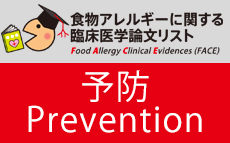帝王切開とアレルギー疾患のリスク:メタ解析/Caesarean delivery and risk of atopy and allergic disease: meta-analyses.
更新日:2016年10月21日
| Author: | Bager P, Wohlfahrt J, Westergaard T. |
|---|---|
| Title: | Caesarean delivery and risk of atopy and allergic disease: meta-analyses. |
| Citation: | Clinical & Experimental Allergy. 2008 Apr;38(4):634-42. doi: 10.1111/j.1365-2222.2008.02939.x. Epub 2008 Feb 11. |
| URL: | https://pubmed.ncbi.nlm.nih.gov/18266879/ |
| Abstract: | BACKGROUND:Studies of delivery by caesarean section (c-section) and the offspring's risk of allergic diseases are of current interest due to concerns about the increased use of c-section in many countries. However, previous studies have reported inconsistent findings. OBJECTIVE:We investigated whether delivery by c-section is associated with an increased risk of atopy and allergic disease by reviewing the literature, performing a meta-analysis, and assessing publication bias. METHODS:We used a systematic literature search of MEDLINE (1966 to May 2007). Six common allergic outcomes were included: food allergy/food atopy, inhalant atopy, eczema/atopic dermatitis, allergic rhinitis, asthma, and hospitalization for asthma. For each outcome a meta-analysis was performed, where a summary odds ratio (OR) was calculated taking into account heterogeneity between the study-specific relative risks. Publication bias was assessed using the funnel plot method. RESULTS:We identified 26 studies on delivery by c-section and one or more of the six allergic outcomes. C-section was associated with an increased summary OR of food allergy/food atopy (OR 1.32, 95% CI 1.12-1.55; six studies), allergic rhinitis (OR 1.23, 95% CI 1.12-1.35; seven studies), asthma (OR 1.18, 95% CI 1.05-1.32; 13 studies), and hospitalization for asthma (OR 1.21, 95% CI 1.12-1.31; seven studies), whereas there was no association with inhalant atopy (OR 1.06, 95% CI 0.82-1.38; four studies) and eczema/atopic dermatitis (OR 1.03, 95% CI 0.98-1.09; six studies). Funnel plots indicated that the association with food allergy/food atopy could be difficult to interpret due to publication bias. For each significant association with an allergic outcome, only 1-4% of cases were attributable to c-section. CONCLUSION:Delivery by c-section is associated with a moderate risk increase for allergic rhinitis, asthma, hospitalization for asthma, and perhaps food allergy/food atopy, but not with inhalant atopy or atopic dermatitis. The increased use of c-section during the last decades is unlikely to have contributed much to the allergy epidemic observed during the same period. |
| 邦文タイトル: | 帝王切開とアレルギー疾患のリスク:メタ解析 |
| 一般向け要約 | 背景:多くの国で帝王切開が増加しており、帝王切開による出生と子どものアレルギー疾患のリスクが心配されている。しかし過去の論文は結果が同じではない。 目的:帝王切開がアレルギー疾患のリスクを増すかどうかを調べた。 方法:MEDLINEを系統的に検索して、6つの一般的なアレルギー(食物アレルギー、吸入抗原のアレルギー、アトピー性皮膚炎、アレルギー性鼻炎、気管支喘息、気管支喘息による入院)についてそれぞれメタ解析をした。 結果:26の研究が帝王切開とアレルギー疾患の関係を検討していた。帝王切開は食物アレルギーを1.32倍、アレルギー性鼻炎を1.23倍、気管支喘息を1.18倍、気管支喘息による入院を1.21倍、それぞれ増やしていた。 一方で吸入抗原のアレルギーやアトピー性皮膚炎は増加させていなかった。いずれのアレルギーに対しても帝王切開による増加は全体の1-4%程度と計算される。 結論:食物アレルギー、アレルギー性鼻炎、気管支喘息、気管支喘息による入院と帝王切開は関連性があった。ここ数十年の帝王切開の増加は同時期のアレルギー疾患の増加には強く貢献はしていないようである。 |
| 専門医コメント | 帝王切開による出産もアレルギー疾患もいずれもここ数十年増えています。しかし詳しく調べてみると両者の関係はそれほど強くないようです。詳しく調べてみたことでその関係性が明らかになりました。 |


